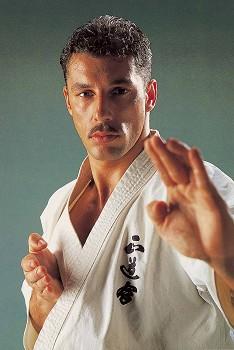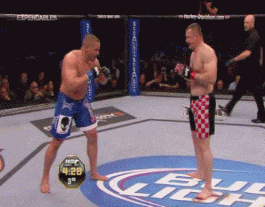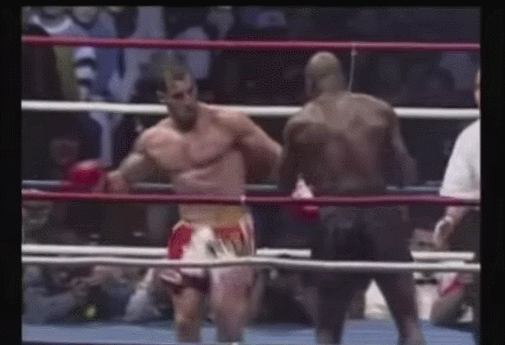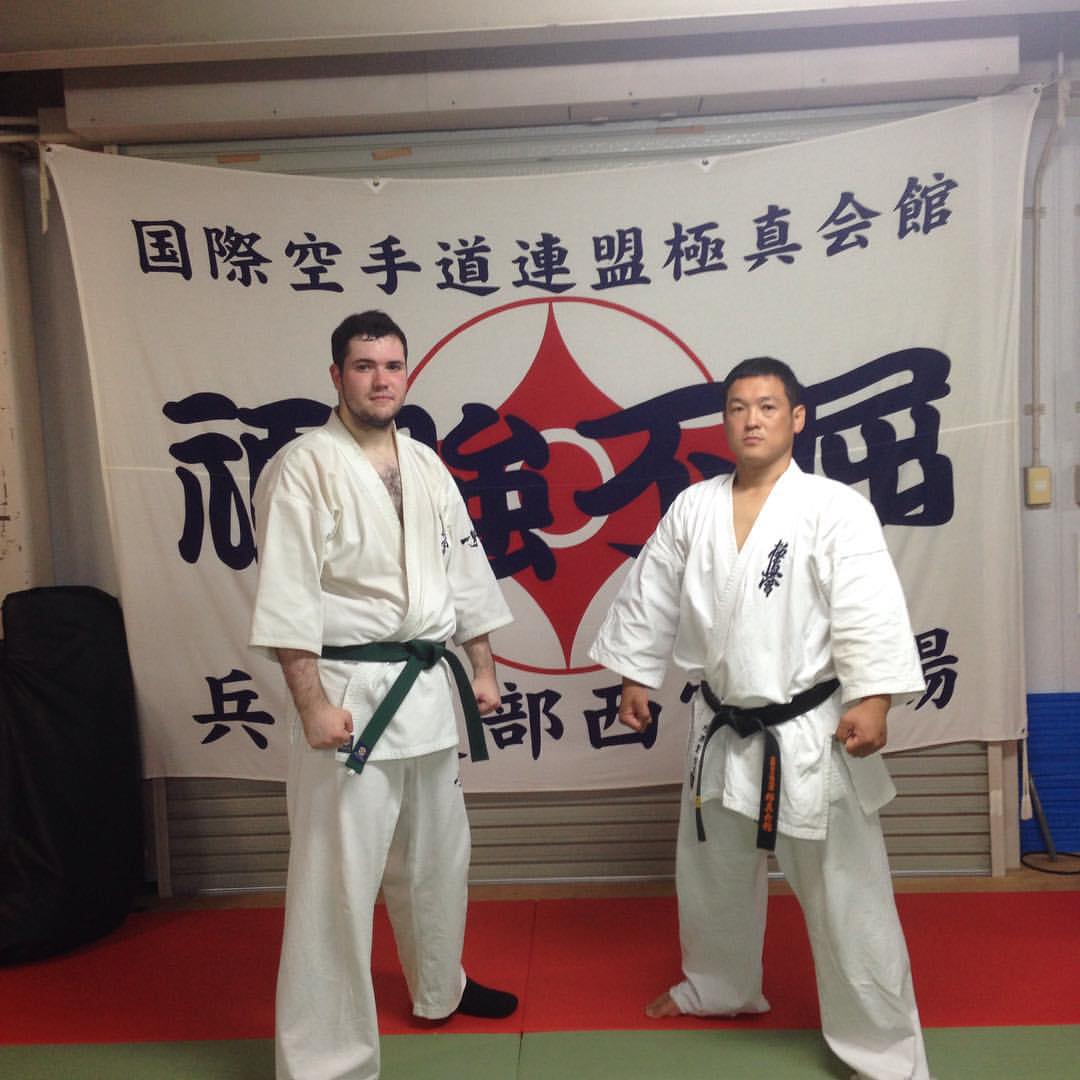Andy Hug was a legendary Swiss Kyokushin Karateka and K-1 Kickboxer. With an extensive knockdown karate and kickboxing record including two European Championships,a silver medal at the 4th Kyokushin World Tournament, a gold and a silver medal at the Seidokaikan World Cup, and winner of the 1996 K-1 Grand Prix, Hug quickly became a household name in Japan and the combat sports world. His famous kakato otoshi , the axe kick, and other unorthodox kicks made him a terrifying opponent on the mat and in the ring. His opponents knew the axe kick was coming and yet could not figure out a way to escape it. In this post, I’d like to talk about what I believe made Hug such a successful fighter and kicker: his fighting stance.

Andy’s Kamae
Andy Hug’s kamae, fighting stance, was very unconventional. With his chest square, feet in a slightly south-pawed position, and hands facing palms-out and open, Hug’s stance was in stark comparison to his opponents’ traditional orthodox bull-like fighting stance.

Despite only standing at 5 feet 11 inches, Hug’s open and narrow fighting stance made him tower over his shorter and more often than not, Japanese, opponents (during his Karate days). This perceived height advantage allowed Hug to stay in kicking range and ultimately rain down a fire storm of axe kicks to his opponent’s head.
The Axe Kick
The kakato otoshi, the axe kick, was made famous by Hug. During my time in Japan, after mentioning that I practiced Kyokushin and liked going to kickboxing matches, I was often met by a earth shattering scream of ” ANDYYYY HUGGGGGG!!! KAKATO OTOSHI!!!”. The axe kick can be executed in a number of ways: swinging the front/back leg in a clockwise motion over one’s head and bringing the heel or ball of the foot down on to one’s opponents face, one can also do it in a counter-clockwise motion in the same fashion, or directly down the center.


Andy’s unique fighting stance allowed him to move freely around the ring or mat and throw the axe kick with little to no setup.Raising his leg so high above his head caused him to lean back out of counter punch or kick range. Also, this ability to throw the axe from anywhere( and connect) made his opponents fearful and most didn’t even attempt to counter attack. I believe this is evidenced in the video below.
Cons to Hug’s Kamae and Axe Kick
- A flaw to Hug’s narrow and open fighting stance was that it left him open to leg kicks as evidenced in the early moments of his fight with Akira Masuda
- The only real way to completely cut Hug off from throwing his axe kick was to bum rush him and stay as close to him as possible. As exhibited by future Kancho of the Kyokushinkaikan, Shokei Matsui. In contrast to recent Kyokushin judging and rule changes made by Kancho, Matsui seems to push and grab Hug during the fight.
- Andy’s fighting strategy seems to fail when forced to fight in a conventional stance. Fellow Kyokushin Karateka, Francisco Filho, executes a right hook to knock Hug out when Hug was in a more traditional stance.
Conclusion
I believe Andy Hug succeeded in creating a fighting stance and style that suited his body type and repertoire of unorthodox techniques. His also endeared himself to the Japanese people as one of the few foreign martial arts heroes through his fighting skills and philosophy. He was known as “The Blue-Eyed Samurai” and is buried in a temple in Kyoto.
On a personal level, he is probably the person I look to the most for sparring inspiration. I have a background in Taekwondo and unorthodox kicks like the axe kick, back kick, and more recently, the spinning hook kick to the leg have suited me well in Kyokushin.
